For centuries, medicine has failed women. Despite the many advancements we have made in society in recent decades, gender-biased healthcare is still a significant problem very few people are talking about. Women are being ignored and dismissed by doctors daily due to gendered misconceptions, leaving them sick, frustrated, and in pain.
Data shows gender bias in healthcare is real. However, it has not been discussed enough. Many women still think this only happens to them or that it is their fault when, in fact, it is a systemic flaw. I was one of them until I started this project, my capstone for the MPS in Data Analytics & Visualization at MICA.
This collection of posters tackles the topic of gender-biased medicine from three different perspectives: historical, scientific, and personal.
The first piece visualizes the different ideas that misshaped women’s health. For centuries, hysteria was the medical explanation for everything men found mysterious or unmanageable in women. To visualize this, I built a dataset of the myths and misbeliefs around this concept, and classified the data points into themes and lines of thought.



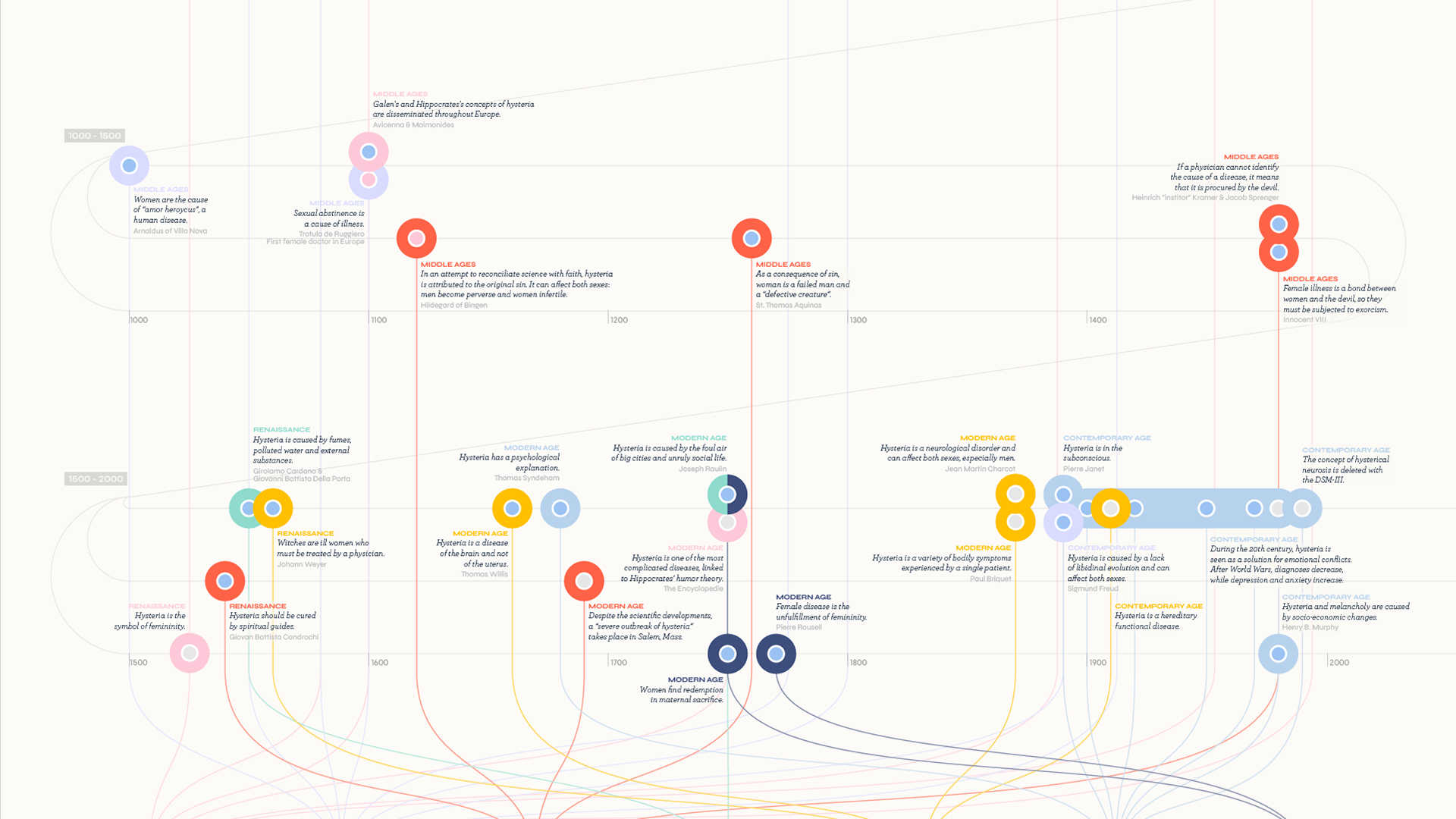
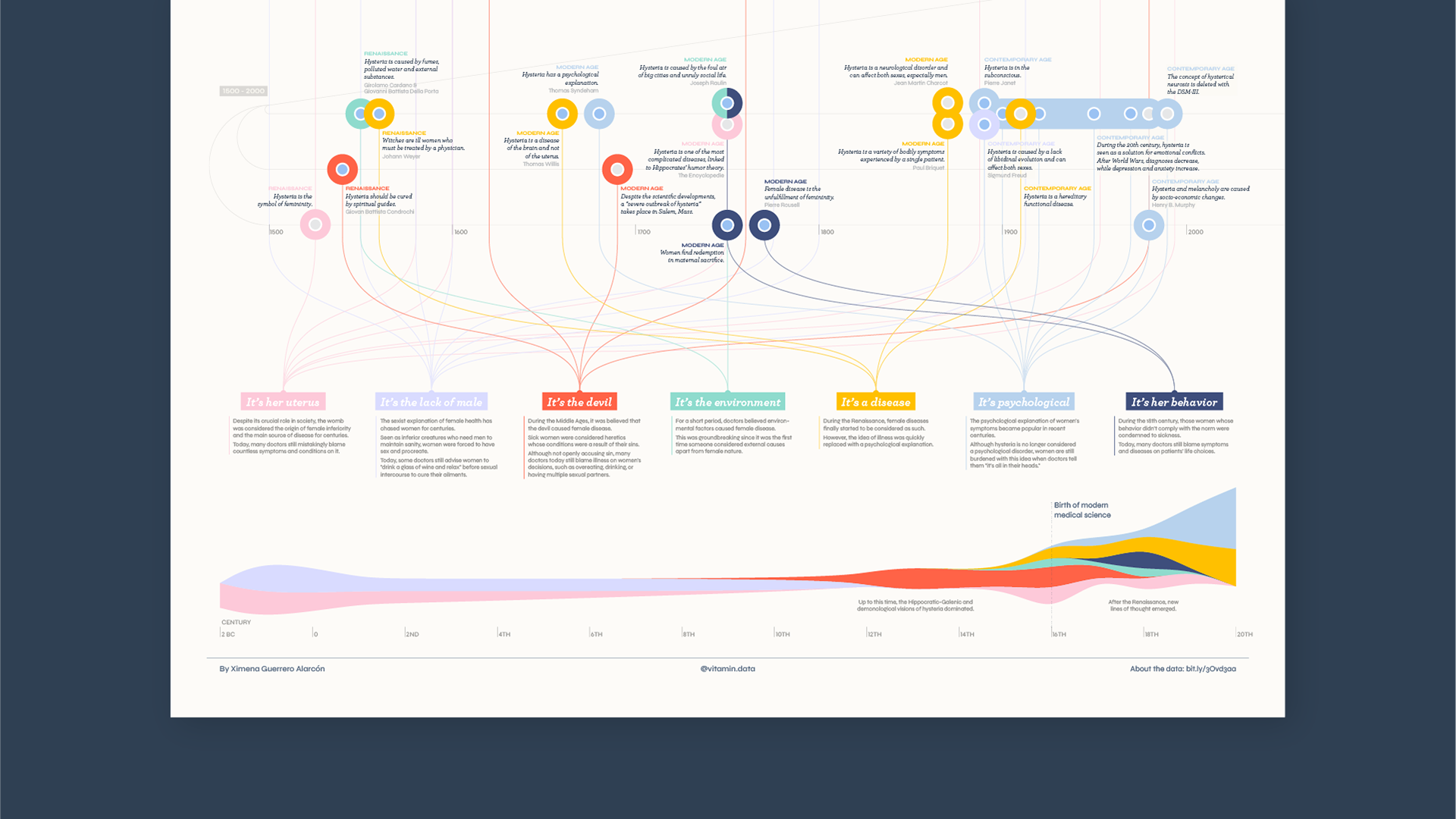
The second poster compares the time of diagnosis for non-sex-specific diseases between both sexes.
It was vital to look at quantitative data to support the key message and prove my hypothesis. I worked with a dataset collected during a study done by the University of Copenhagen that compares the average age of diagnosis between men and women for hundreds of diseases (Westergaard et al, 2019).

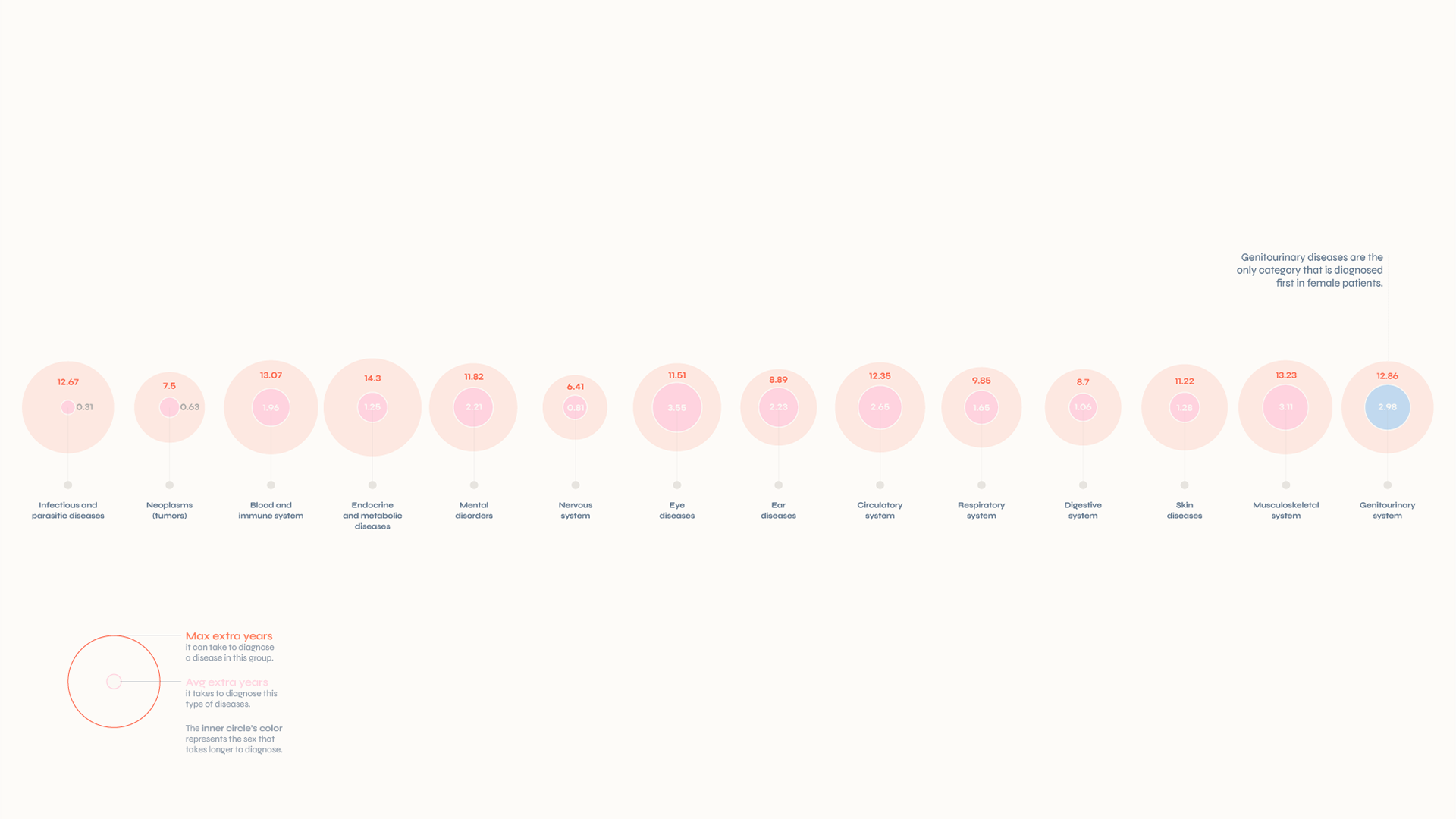



The third poster tells the stories of 105 women through individual data portraits.
The data visualized in this piece comes from a dataset that compiles multiple cases from female patients that went through gender-biased healthcare experiences in western countries. To build this dataset, I defined the data I expected to collect. Then, I hand-coded the variables for every observation by detecting keywords in the source texts.
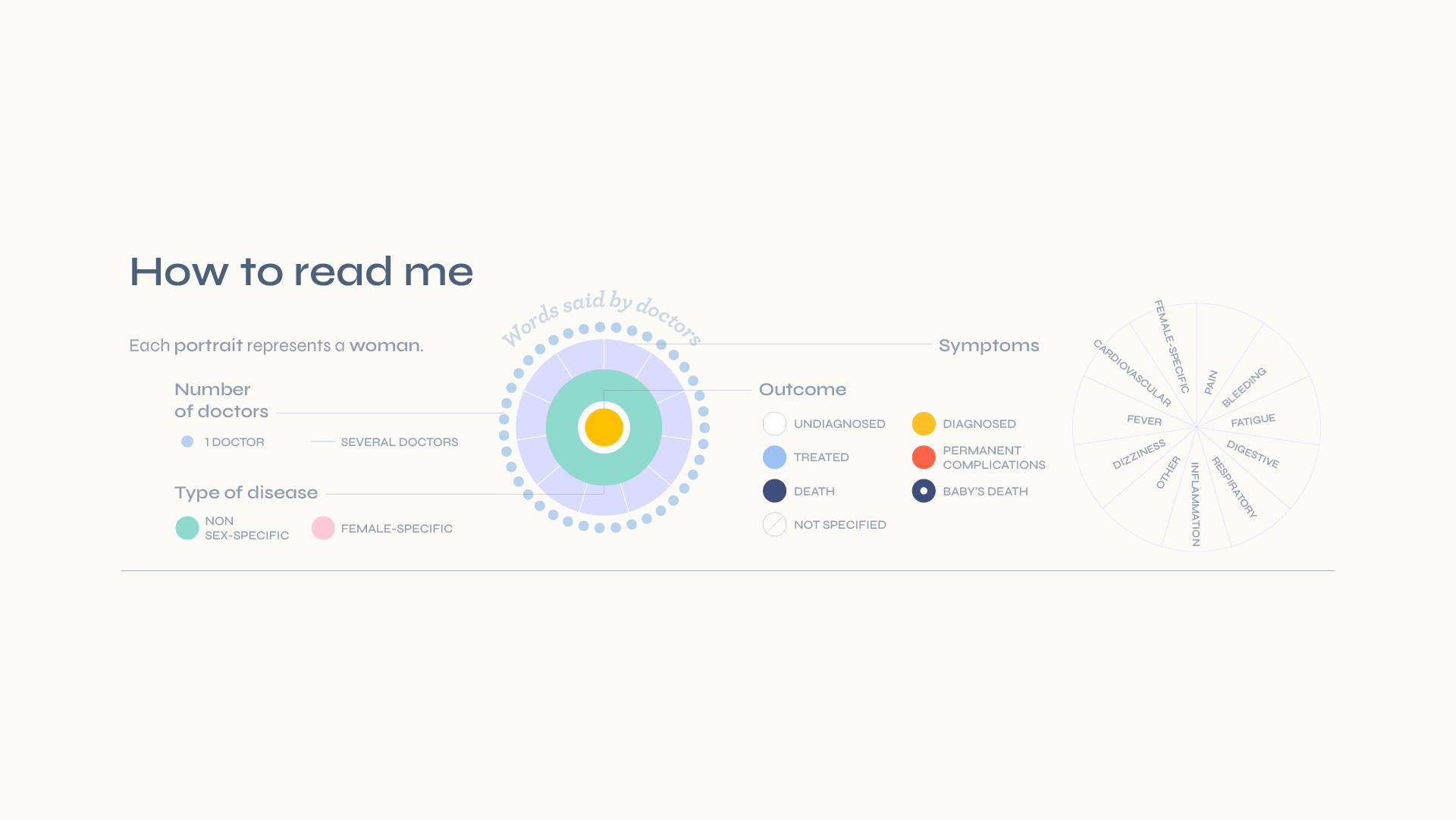




Finally, the last poster visualizes the feelings the 105 women in the data portraits went through. This piece provides a human dimension to the data by depicting how emotional these experiences can be.

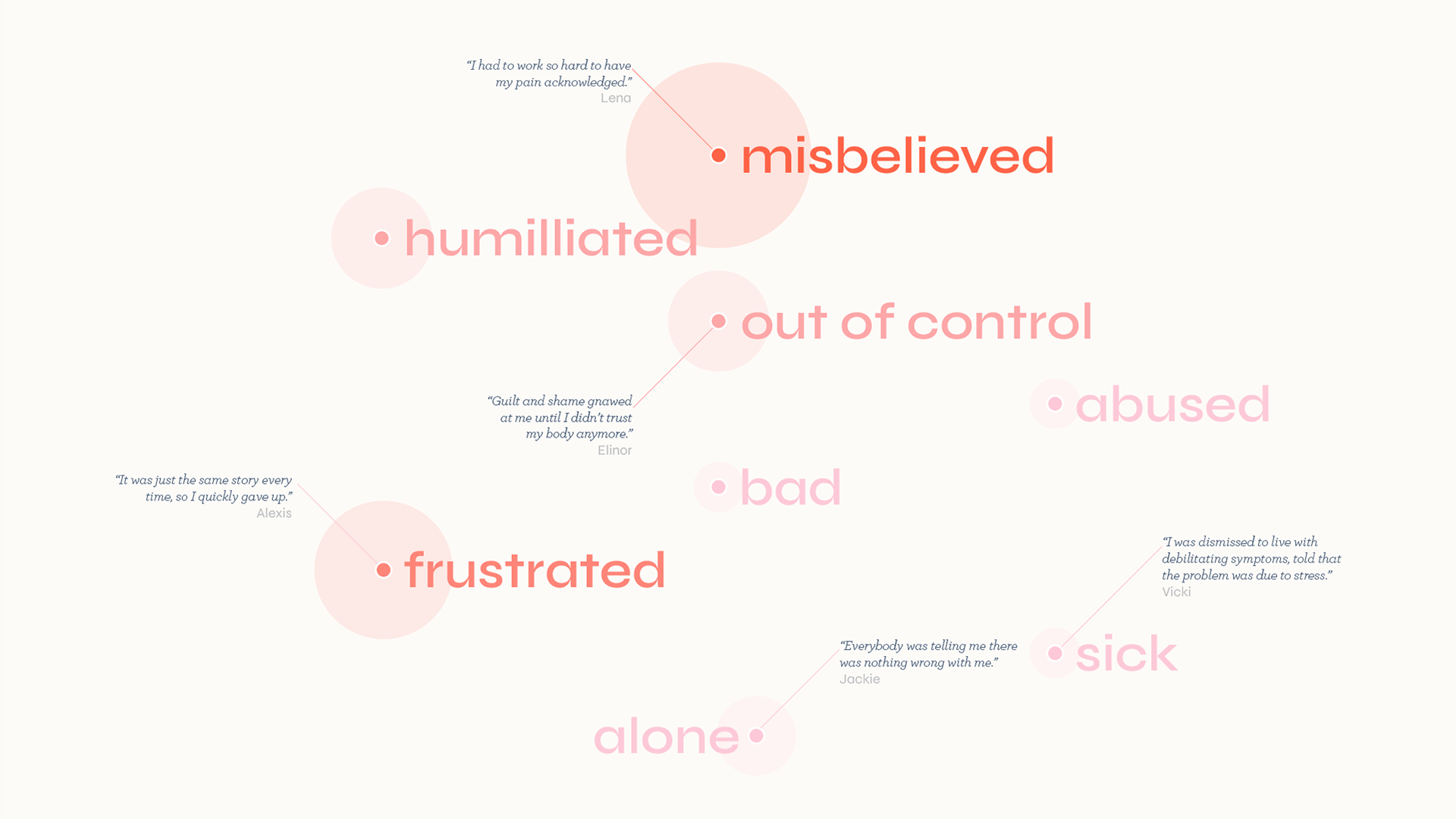



Watch my capstone presentation below to know more about the project's rationale, data, analysis process, audience and creative challenges.
Citations and references
Tasca, C., Rapetti, M., Carta, M. G., & Fadda, B. (2012). Women and hysteria in the history of Mental Health. Clinical practice and epidemiology in mental health : CP & EMH. Retrieved May 1, 2022, from https://www.ncbi.nlm.nih.gov/pmc/articles/PMC3480686/
Westergaard, D., Moseley, P., Sørup, F.K.H. et al. Population-wide analysis of differences in disease progression patterns in men and women. Nat Commun 10, 666 (2019). https://doi.org/10.1038/s41467-019-08475-9
Data sources











